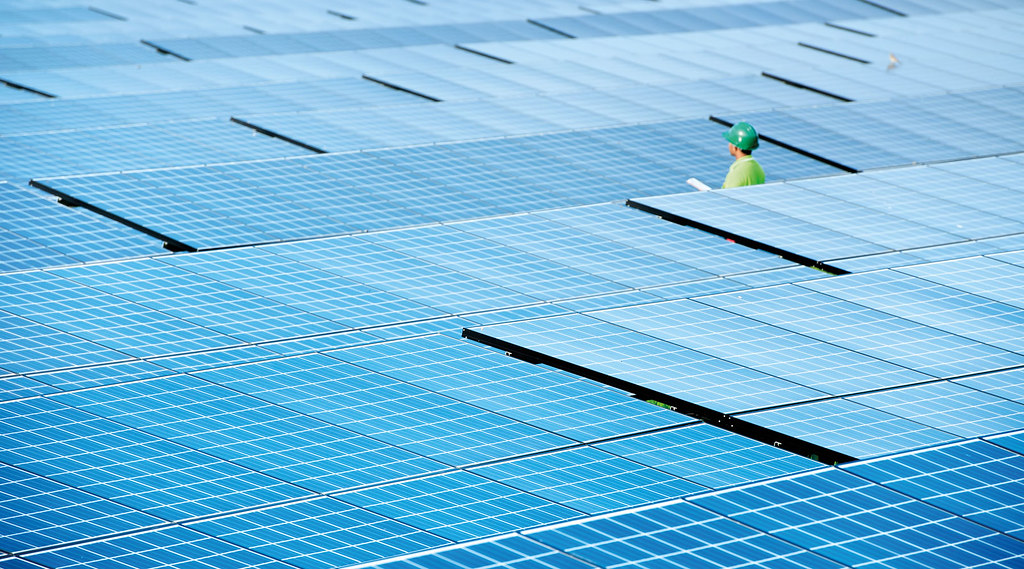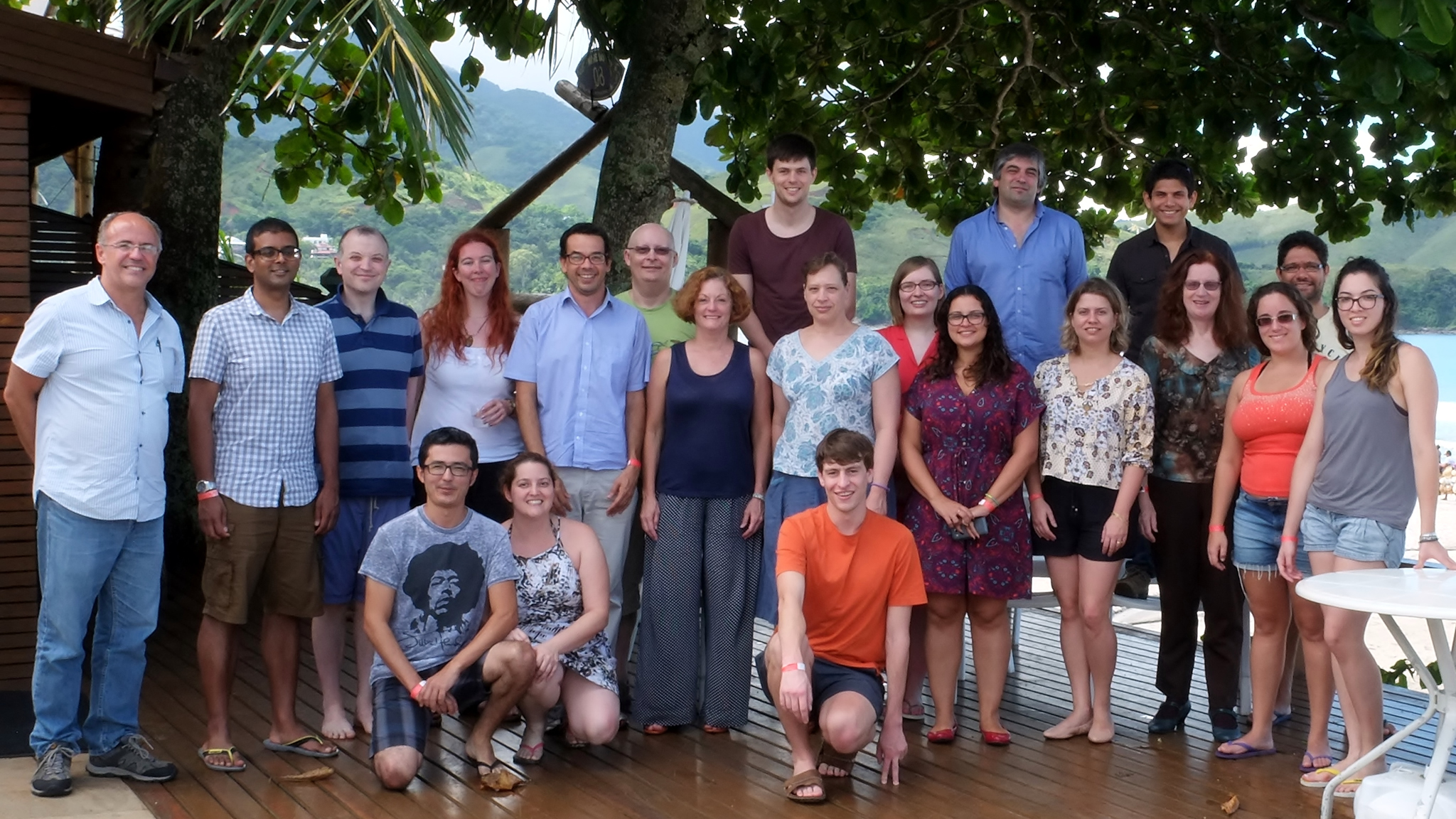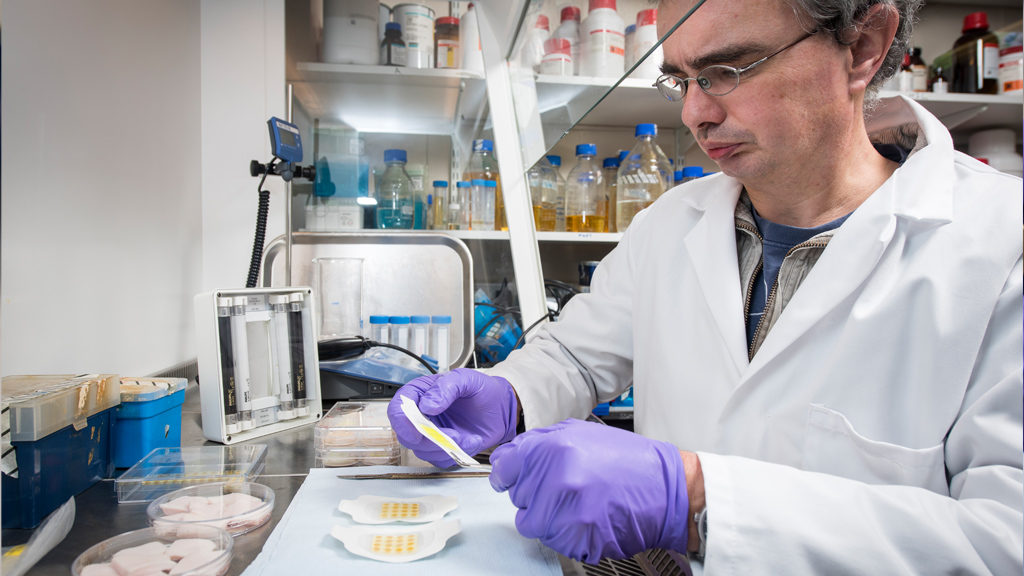Finding a less costly solution
Traditional solar cells are produced from crystalline silicon, which costs a lot of energy to make.
There are efficient alternatives to silicon, but these materials are scarce. And if the world is going to increase its use of solar energy then we need to find more easily sourced alternatives.
As part of a consortium of eight universities working to improve the efficiency of next generation photovoltaic devices, researchers at the University of Bath are looking for such sustainable materials.
They are also looking at novel types of solar cells, particularly ones which can be made very light and flexible, unlike conventional silicon cells, 'which have to be protected by glass plates - making them fragile and heavy.
These new solar cells will work in diffuse light, so will be much more appropriate for use in the UK, and the rest of northern Europe.
Their work falls into three broad areas:
- Identifying new materials – using computational chemistry to predict the properties and performance of materials, even before they’ve been made in the lab
- Building prototypes – to measure their efficiency, understand better how the different materials interact with each other and improve production processes
- Identifying potential improvements – comparing predictions for the currents generated with measurements, to update knowledge of how the cells work
Identifying new materials
To overcome the limitations of the current generation of silicon-based solar cells, they’re looking at new materials which have similar energy conversion performance – but are cheaper to produce on a large scale.
In order to identify potentially suitable materials, they perform computer simulations on the fundamental building blocks of matter – atoms, ions and electrons. This involves combining high-performance computing resources with quantum chemistry, developed over the last century.
The ultimate aim is to predict the properties and performance of materials even before they’ve been made in the lab.
One recent success is Kesterite, a new material formed from just copper, zinc, tin and sulphur. All are quite low-cost and abundant elements – important factors when looking to scale up solar cell technologies to meet a significant fraction of our energy needs.
Once they have a robust theoretical understanding of how the material works – how it interacts with light, and how we can optimise its performance – they pass this information on to experimental collaborators who synthesise the materials.
Building prototype solar cells
Once the materials are synthesised, they are put into test cells – typically one centimetre squared – and their efficiency and behaviour are measured.
Then some whole device modelling is conducted, to better understand how all the different materials in the solar cells interact with each other.
Identifying potential improvements
Designing the cells to be as efficient as possible requires working out whether charges have been generated, their trajectories as they flow through the device, how they get out and where losses have occurred en route.
By comparing predictions of how charges are generated in the computer simulations with measurements from the initial prototypes, the researchers are able to update their knowledge of how these cell works. And more importantly, how they stop working - because the cells degrade quite quickly.
This process plays an important role in developing designs that give the solar cells a longer lifetime.
A brighter future for solar
Designing the cells to be as efficient as possible requires working out whether charges have been generated, their trajectories as they flow through the device, how they get out and where losses have occurred en route.
By comparing predictions of how charges are generated in the computer simulations with measurements from the initial prototypes, the researchers are able to update their knowledge of how these cell works. And more importantly, how they stop working - because the cells degrade quite quickly.
This process plays an important role in developing designs that give the solar cells a longer lifetime.
New solar cell technologies
There are several sustainable options for future solar cells.
Kesterite
Kesterite materials absorb light very strongly.
Using much less material than silicon-based solar cells, they could drive down the cost of the overall device, while maintaining similar performance.
Dye-sensitised solar cells
Containing a translucent molecular dye that absorbs sunlight - like the chlorophyll in green leaves - they're much more portable and flexible than traditional solar cells.
Applications include painting the roofs of buildings, so they act as giant solar panels; coating windows; or incorporating them in clothing to power phones and similar devices.
Organic solar cells
Organic solar cells convert light to electricity using carbon-based molecules that are semi-transparent and tuneable to any colour. Their flexibility and ease of production mean that achieving greater efficiency in changing light to electricity could make these cells cheaper and easier to deploy than silicon-based cells.



